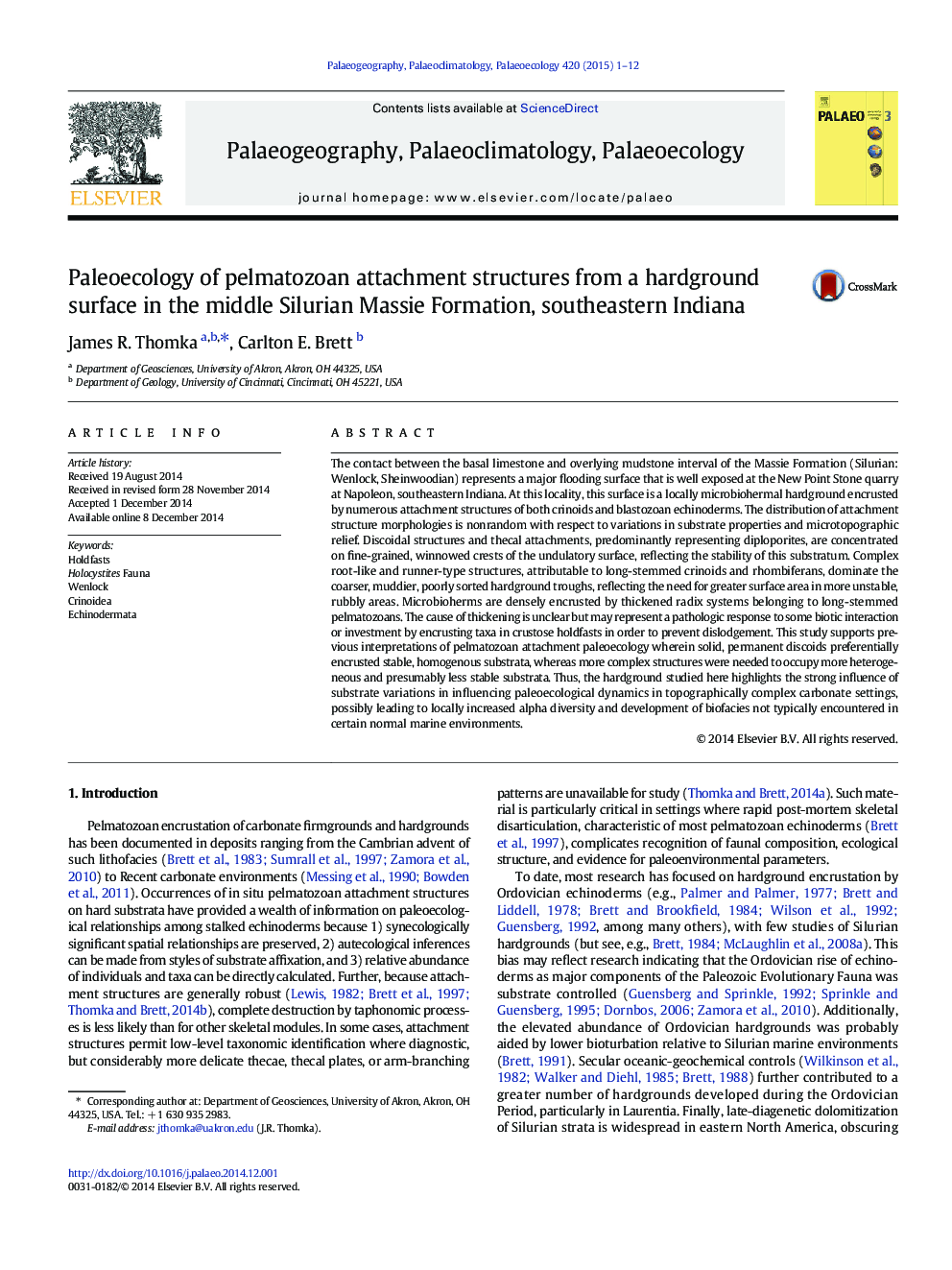| کد مقاله | کد نشریه | سال انتشار | مقاله انگلیسی | نسخه تمام متن |
|---|---|---|---|---|
| 4466052 | 1622170 | 2015 | 12 صفحه PDF | دانلود رایگان |

• 12 echinoderm holdfast morphologies are present on a Silurian hardground.
• Simple discoidal attachments encrusted stable hardground crests.
• Complex radix and dististele structures occupied more unstable hardground troughs.
• Microbioherms are encrusted by modified radix structures.
• Substrate variability likely increased co-occurrence of crinoids and blastozoans.
The contact between the basal limestone and overlying mudstone interval of the Massie Formation (Silurian: Wenlock, Sheinwoodian) represents a major flooding surface that is well exposed at the New Point Stone quarry at Napoleon, southeastern Indiana. At this locality, this surface is a locally microbiohermal hardground encrusted by numerous attachment structures of both crinoids and blastozoan echinoderms. The distribution of attachment structure morphologies is nonrandom with respect to variations in substrate properties and microtopographic relief. Discoidal structures and thecal attachments, predominantly representing diploporites, are concentrated on fine-grained, winnowed crests of the undulatory surface, reflecting the stability of this substratum. Complex root-like and runner-type structures, attributable to long-stemmed crinoids and rhombiferans, dominate the coarser, muddier, poorly sorted hardground troughs, reflecting the need for greater surface area in more unstable, rubbly areas. Microbioherms are densely encrusted by thickened radix systems belonging to long-stemmed pelmatozoans. The cause of thickening is unclear but may represent a pathologic response to some biotic interaction or investment by encrusting taxa in crustose holdfasts in order to prevent dislodgement. This study supports previous interpretations of pelmatozoan attachment paleoecology wherein solid, permanent discoids preferentially encrusted stable, homogenous substrata, whereas more complex structures were needed to occupy more heterogeneous and presumably less stable substrata. Thus, the hardground studied here highlights the strong influence of substrate variations in influencing paleoecological dynamics in topographically complex carbonate settings, possibly leading to locally increased alpha diversity and development of biofacies not typically encountered in certain normal marine environments.
Journal: Palaeogeography, Palaeoclimatology, Palaeoecology - Volume 420, 15 February 2015, Pages 1–12